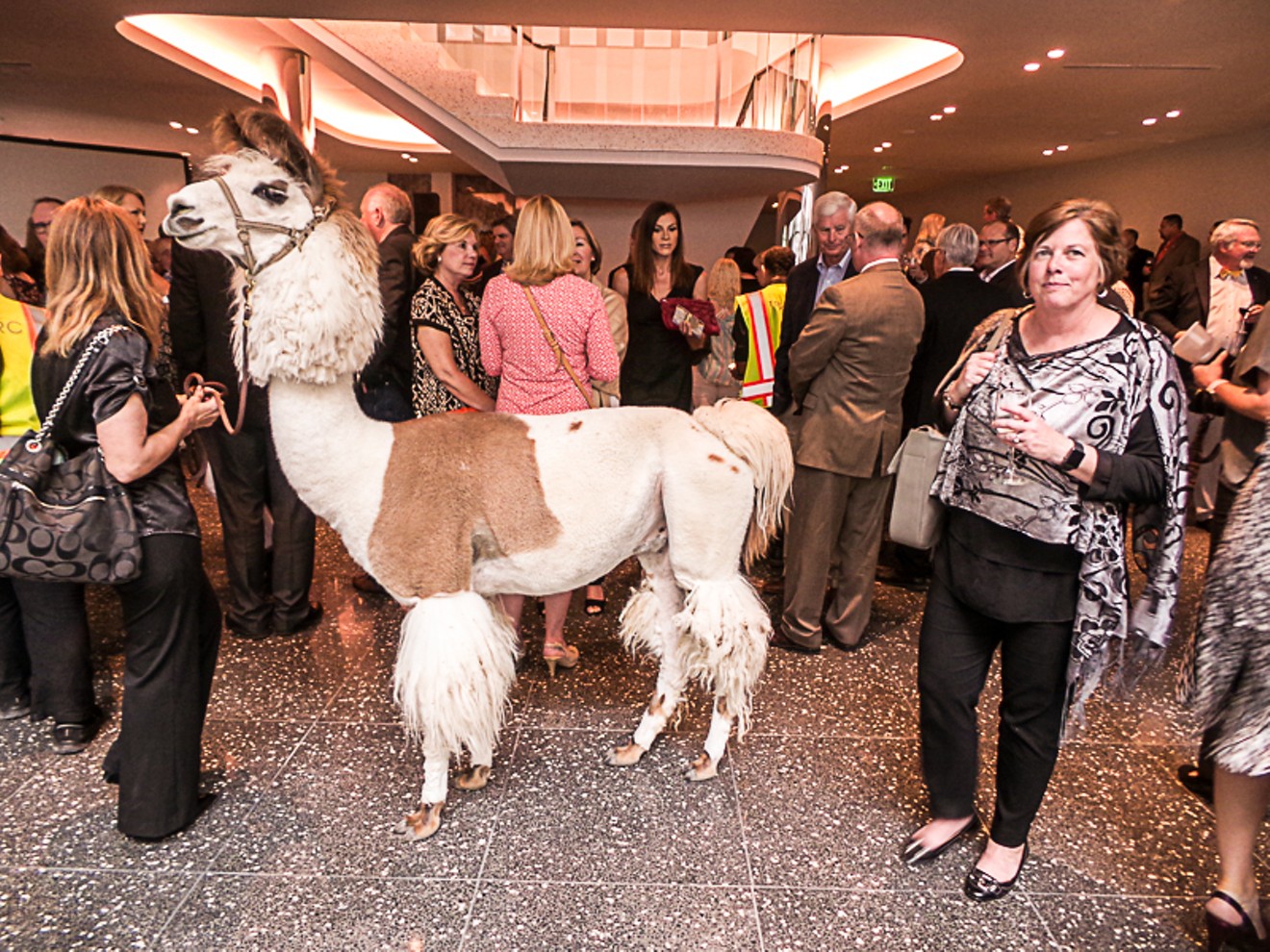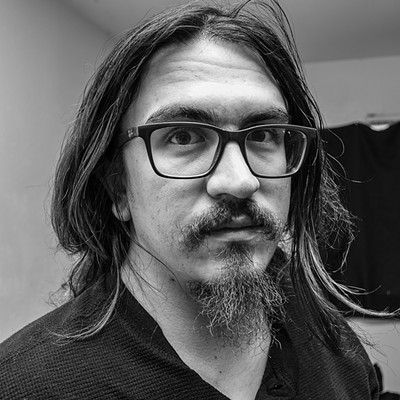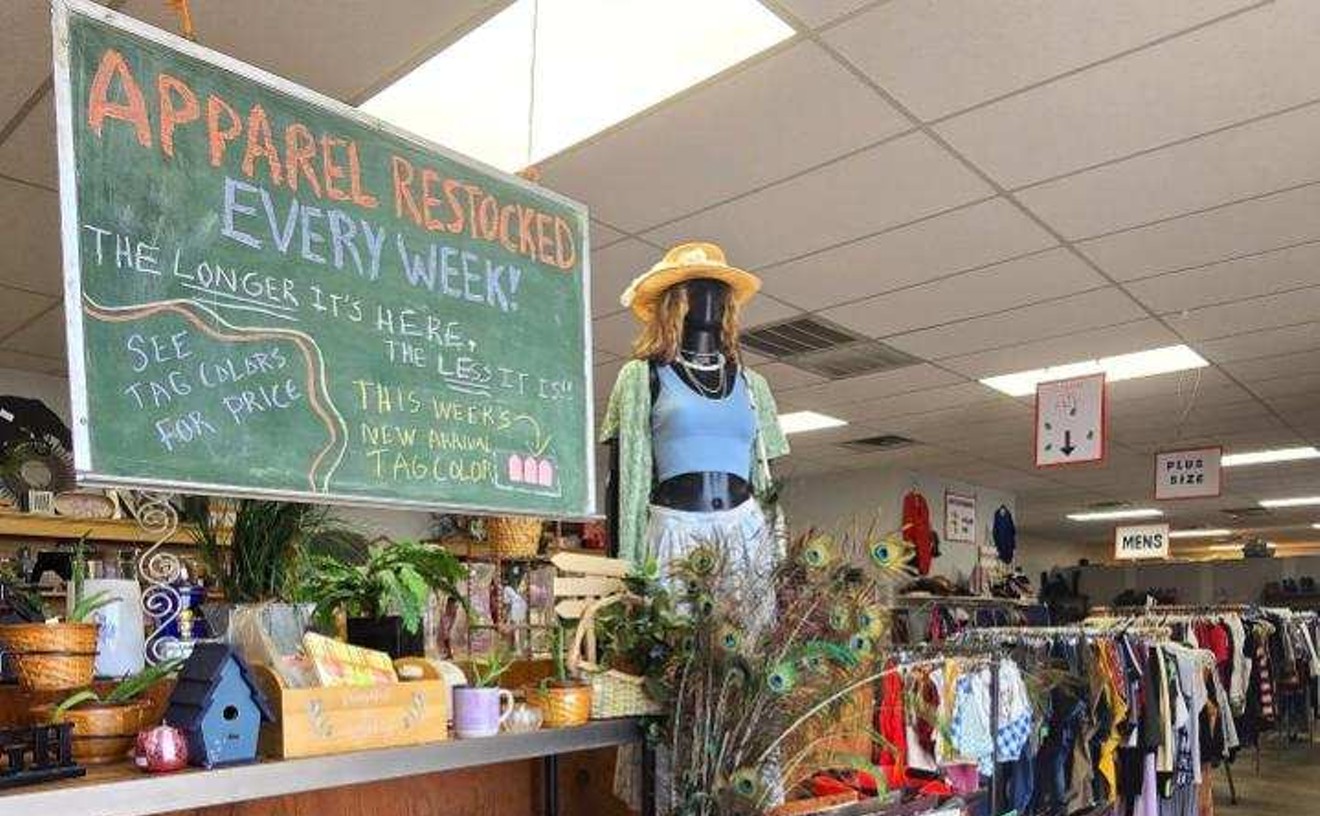“I thought it could’ve been a teardown," Rosen said. “The bathrooms were falling apart; nothing was in good shape.” But she had no intention of tearing down the house designed by Howard Meyer.
The house was built in 1957, and its wood veneered “floating ceiling” had sustained substantial water damage that required painstaking restoration. But after about a year of construction and restoration, this North Dallas home had been given a second lease on life.
The roof was repaired, the home was modernized, and the irreplaceable brick and stonework were protected or reincorporated into the house. A carport in the back that had been converted into a playroom years before was restored, too.

Eleven developments, residences and historic buildings were honored Wednesday night at the 18th annual Preservation Achievement Awards.
Nicholas Bostick
“I think it would have been a tragedy if anyone had torn this house down,” said Laura Baggett, the architect in charge of the Sidell House’s preservation, in the home's wood-paneled living room. “There are some homes that probably do need to be torn down, but there are a lot more that don’t, that do have great bones, that have the ability to be made into a great house that functions for today. So I think it’s important that we respect the architects of the past like Howard Meyer. “
The Sidell House was among 11 developments, residences and historic buildings in Dallas to be honored May 31 at Preservation Dallas’ 18th annual Preservation Achievement Awards. The award ceremony also gives recognition to the preservationists, architects and contributors who have helped save Dallas’ rich architectural history.
More than 250 guests – and a llama (a nod to the venue’s former owner Conrad Hilton, who was a big fan of the animal) – were crammed into the lobby of the still-under-restoration Statler Hotel and Residences for the event, headlined by keynote speaker Stephanie Meeks, president and CEO of the National Trust for Historic Preservation."As goes downtown, so goes Dallas," said Downtown Dallas Inc. vice chairman John Crawford.
tweet this
“Neighborhoods with a mix of older and newer buildings tend to have more small-business jobs and more diversity in housing costs, meaning there are more opportunities for families of all incomes,” Meeks said, referring to a report released in 2014 by the National Trust titled “Older, Smaller, Better."
The study looked at three U.S. cities, utilizing geographical mapping, cellphone usage data and census information, and concluded that communities are stronger in districts that incorporate some smaller, older buildings. Meeks said that last November, the National Trust expanded its study to 50 more cities, including Dallas in its Atlas of ReUrbanism.
The study found that blocks in Dallas with more historic buildings have 48 percent more women and minority-owned businesses, a higher housing density and greater diversity of residents than blocks dominated by newer structures.

John Crawford, vice chairman of Downtown Dallas Inc., accepts an award for the organization's efforts in revitalizing the urban core of the city.
Nicholas Bostick
The Texas Historic Preservation Tax Credit Program went into effect Jan. 1, 2015, and offers incentives for to rehabilitate historic buildings and districts — which, according to Atlas of ReUrbanism, could apply to a large portion of Dallas. Although age is not the sole consideration when it comes to obtaining a historic designation, it's an important one, and almost two-thirds of the buildings in Dallas are 50 years or older.
Preservation Dallas ended the event with a special tribute to Downtown Dallas Inc. for its efforts in revitalizing the urban core of the city by attracting more businesses to downtown and by acting as administrator of the Dallas Downtown Improvement District. John Crawford, vice chairman of DDI, accepted the award on behalf of the organization.
“Tonight I think you’ve heard an awful lot of why historic preservation, what it means, and how important it is not only to be where we are today but certainly where we’re going,” Crawford said. “I can only tell you that the future is coming at us at a breakneck speed. … With the help of all of you and others in this community, we are going to continue to prove that as goes downtown, so goes Dallas. We have a platform to build on, and I can assure you that the best has yet to come.”













